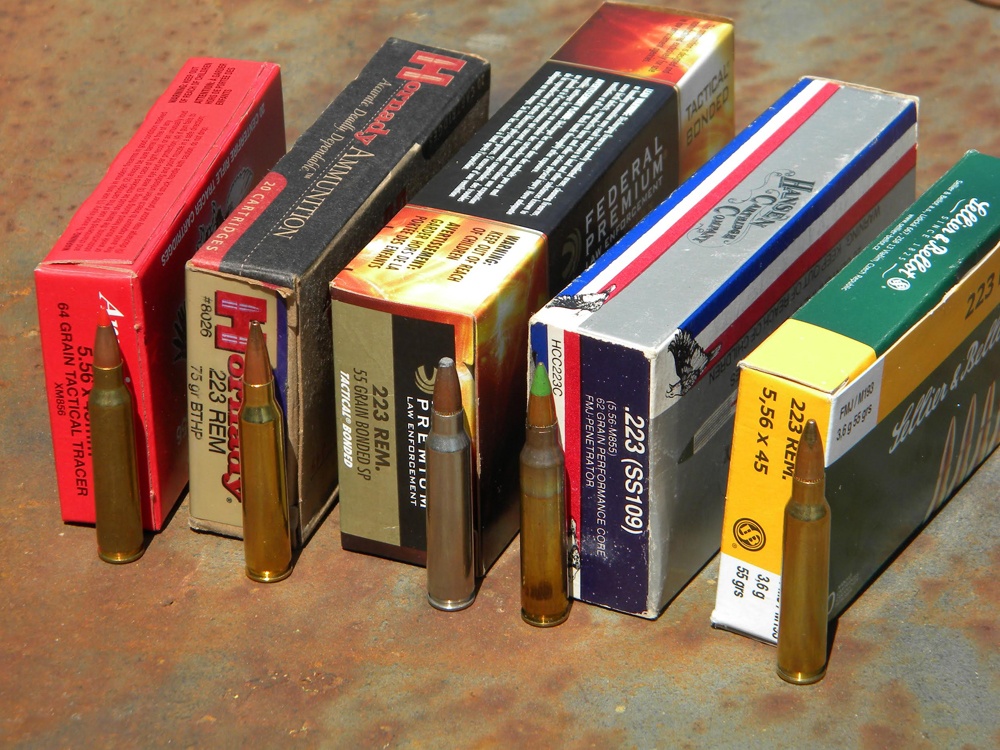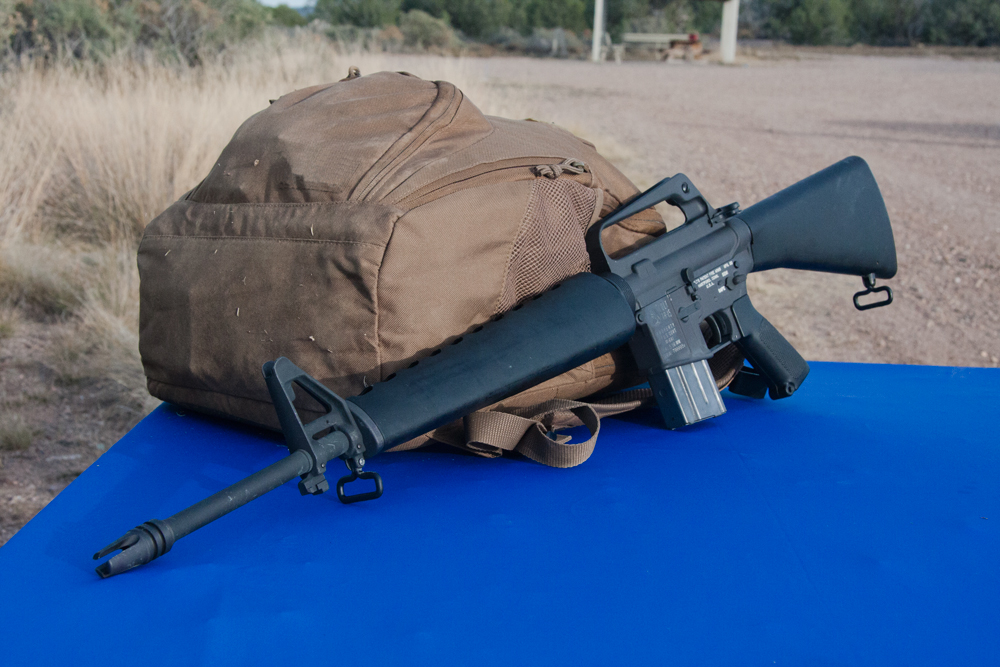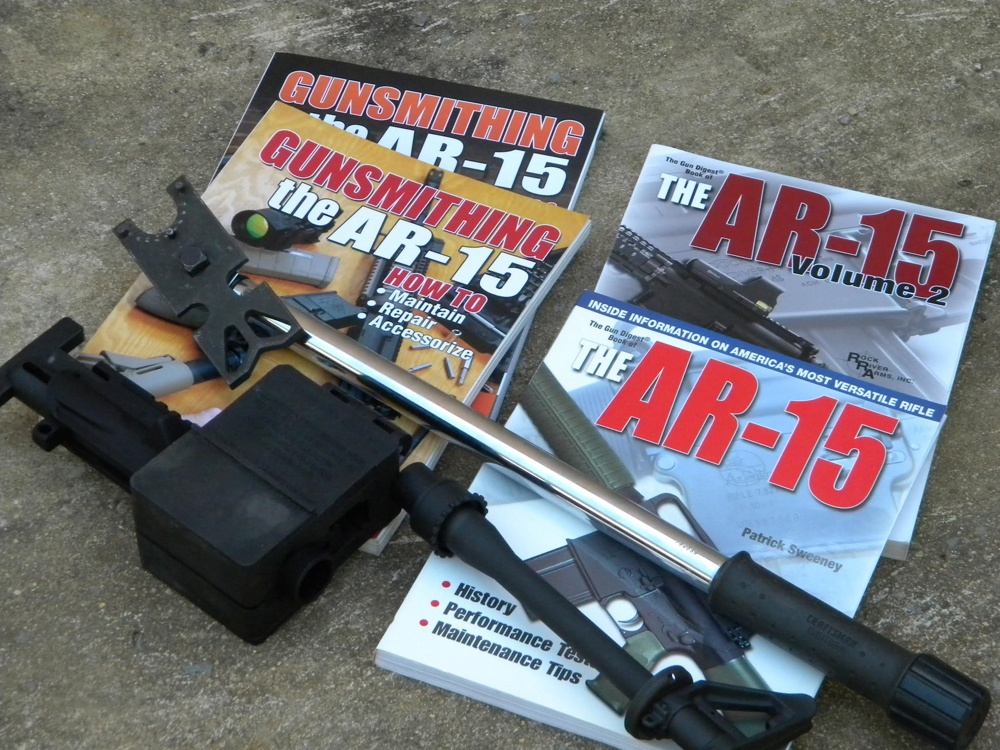
 The intended use of your rifle dictates bullet choice, and bullet choice dictates the proper AR barrel twist rate.
The intended use of your rifle dictates bullet choice, and bullet choice dictates the proper AR barrel twist rate.
One of the great mysteries about the 5.56 NATO AR is “barrel twist.” This refers to the twist rate of the rifling in the barrel that applies spin to the bullet — spin stabilizes the bullet — and it’s something that many shooters don’t know that much about. Using the correct bullet to match your AR barrel twist rate, or vice versa, is critical for accuracy.
The “rifling” refers to the grooves cut into the inside of the barrel. The rifling spins the bullet, creating stability and accuracy, just like when you throw a football. This is why barrels have evolved from “smoothbores” with no rifling, to barrels with rifling, starting in the 1500s. Hence the term, “rifle.”
Rifling is rated by “twist rate,” which indicates the distance required for one groove to make a complete turn, rotating 360 degrees. A barrel with 1:12 rifling is a slow twist, meaning it takes 12 inches for the groove to make a full rotation. Said another way, a bullet must travel through the barrel 12 inches before it spins one complete rotation. A 1:7 twist is faster — one rotation in 7 inches — and applies more spin to the bullet.
You can usually get away with spinning a bullet faster than necessary, but a bullet that’s spinning too slowly isn’t stable and won’t be very accurate. Nearly every AR manufactured today has the barrel’s twist rate stamped into the outside of the barrel.
Why are there different twist rates for the AR? Because there’s such a wide variety of bullet weights available. But to fully understand this, we need to look at a little bit of AR history.

The Birth Of The AR
After World War II, with a brief interruption for the Korean War, the American military decided that a lightweight rifle shooting a bullet of “intermediate” weight — so troops could carry more ammo — was the key to victory. The original Armalite AR-15, later adopted as the M-16, was designed to be an “assault” rifle, firing a .223-caliber bullet with an effective range out to 300 yards. This would replace larger “battle” rifles that fired a heavier bullet, such as the .308 round, and were accurate for distances out to about 800 yards.
The first AR-15s and M-16s had a 1:14 twist, which provided the original 55-grain bullet, the XM193, with good accuracy and effective stopping power. As soon as the bullet hit anything denser than air, it immediately started to tumble and fragment. This was the combination that gave the .223 its reputation for “exploding.”
As a result, bullets started to get heavier. The XM196, the original tracer round, was heavier than the XM193. But the 1:14 twist rate was too slow to stabilize the heavier bullet, and 1:12 rifling became standard. This rate would be used in military barrels until the A2 version of the M-16 was adopted in the 1980s.
With the birth of the NATO round M855, a 62-grain bullet with a “penetrator” core for punching through steel and such, came the need for a faster twist rate. The twist rate was increased from 1:12 to 1:7 inches of travel, or twice the rate used in earlier versions of AR rifles.
At the same time, the civilian market began using heavier bullets to increase the accuracy of the AR, especially at longer distances. This required changing the twist rate of the barrel to provide the spin necessary for the heavier bullets. (Keep in mind that as bullets get heavier they generally get longer, which is also a factor.)
Commercially available ARs began to show up with a 1:9 twist rate, which provided stability to a wider range of bullet weights. Long-distance shooters began using 1:8 and 1:7 twist rates for bullets weighing 70-80 grains.
 So, How Do You Choose?
So, How Do You Choose?
What twist rate do you need? It depends on what you’re going to do with your AR.
A carbine set up for self-defense is going to differ from a rifle set up for competitive shooting at long distances or varmint shooting. And for self-defense, it would be a very rare situation where you’re justified in shooting a threat at long distance, and at closer distances, over-penetration can occur with heavier bullets.
You choose bullets based on the anticipated use of your AR. The bullets you need determine the twist rate of the barrel. Or, the AR you have dictates what ammunition you use.
For example, with an older, original AR and a 1:12 barrel, you’re going to be limited to 55-grain bullets and lighter weight varmint rounds, which are usually in the 40-grain plus weight range. This barrel will not provide stability to anything heavier than 55-grain bullets. A heavy bullet without enough twist is unstable. You can shoot them, but you’ll see bullets going through the target sideways, and accuracy is definitely going to suffer.
A 1:9 twist, which is found in a lot of commercial ARs, works well with 55- to 68-grain projectiles. If you want to shoot heavier bullets, those up to about 77 grains, you’ll need a 1:8 twist.
The 1:7 twist, currently the standard for military weapons, works well with bullets up to 80 grains. This “fast” twist might create problems with extremely lightweight varmint rounds, such as 36-grain bullets, but it will work well with most everything else. Again, you can shoot lighter weight bullets with a faster twist, but as mentioned, shooting heavy bullets in a slow twist will cause problems.
As long as you have a fairly “recent” AR and you’re not shooting bullets at the extreme ends of the weight spectrum — in the 30-grain or 80-grain ranges — you’ll probably be safe with the barrel you have. Buy a variety of ammunition with different weight bullets and test-fire them to discover what works best in your AR.
If you’re going to build an AR for a specific application, especially when you want to get the maximum accuracy available, you’ll want to match the barrel twist to the bullet you’re going to use.
The AR is a fantastic firearm; you can set one up for almost any purpose. The key is knowing what you want it to do, and then researching to find out what you need to fit that application. This is especially true for barrel twist and bullet weight, ensuring you have the right combination to hit your target accurately.
Editor's Note: This article is an excerpt from the June 2017 issue of Gun Digest the Magazine.

Next Step: Get your FREE Printable Target Pack
Enhance your shooting precision with our 62 MOA Targets, perfect for rifles and handguns. Crafted in collaboration with Storm Tactical for accuracy and versatility.
Subscribe to the Gun Digest email newsletter and get your downloadable target pack sent straight to your inbox. Stay updated with the latest firearms info in the industry.

![Best Concealed Carry Guns In 2025 [Field Tested] Wilson Combat EDC X9S 1](https://gundigest.com/wp-content/uploads/Wilson-Combat-EDC-X9S-1-324x160.jpg)


![Best 9mm Carbine: Affordable PCCs [Tested] Ruger Carbine Shooting](https://gundigest.com/wp-content/uploads/Ruger-Carbine-Shooting-100x70.jpg)
![Best AR-15: Top Options Available Today [Field Tested] Harrington and Richardson PSA XM177E2 feature](https://gundigest.com/wp-content/uploads/Harrington-and-Richardson-PSA-XM177E2-feature-100x70.jpg)

I’m a retired 45 year gun maker and gunsmith, I have done it all from antiques to modern long range. I have only seen a few people go to the faster twist because there never was very much ammo in the 62 grain bullets up till lately and it’s just too expensive to fire up in an AR. Most young people who have an AR can’t shoot very accurately because most of the barrels are crap on AR’s as far as quality goes. The manufacturers made a boatload of 55 grain bullets for years and that’s what people shot. And I have only seen a couple of AR’s that were accurate with a 1:9 twist for a 55 grain bullet, and those had to be flukes. The best twist for a 55 grainer is 1:11.250. that will stabilize everything from a 50 grain to a 68 grain. The M 16 and the AR 15 were never ment to be bench rest guns. They really are not good with those 1:9 twist. That twist is for a 68 grain bullet and never intended for a 55 grain. Most people can’t afford to purchase the 75 grains ammo to go blow off 300 rounds at the range. There is so much misleading information out the that it’s screwed up the whole firearms industry . Some people are starting to recognize it and only the best barrel makers know it.
My two cents.